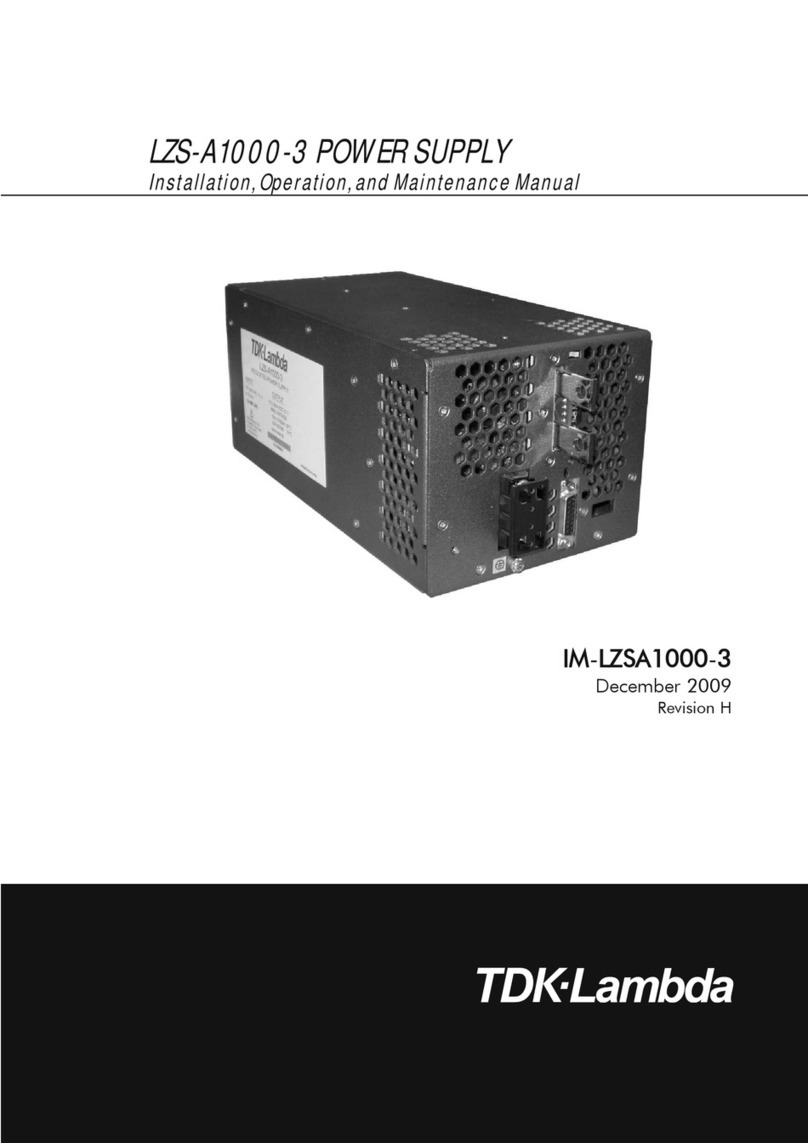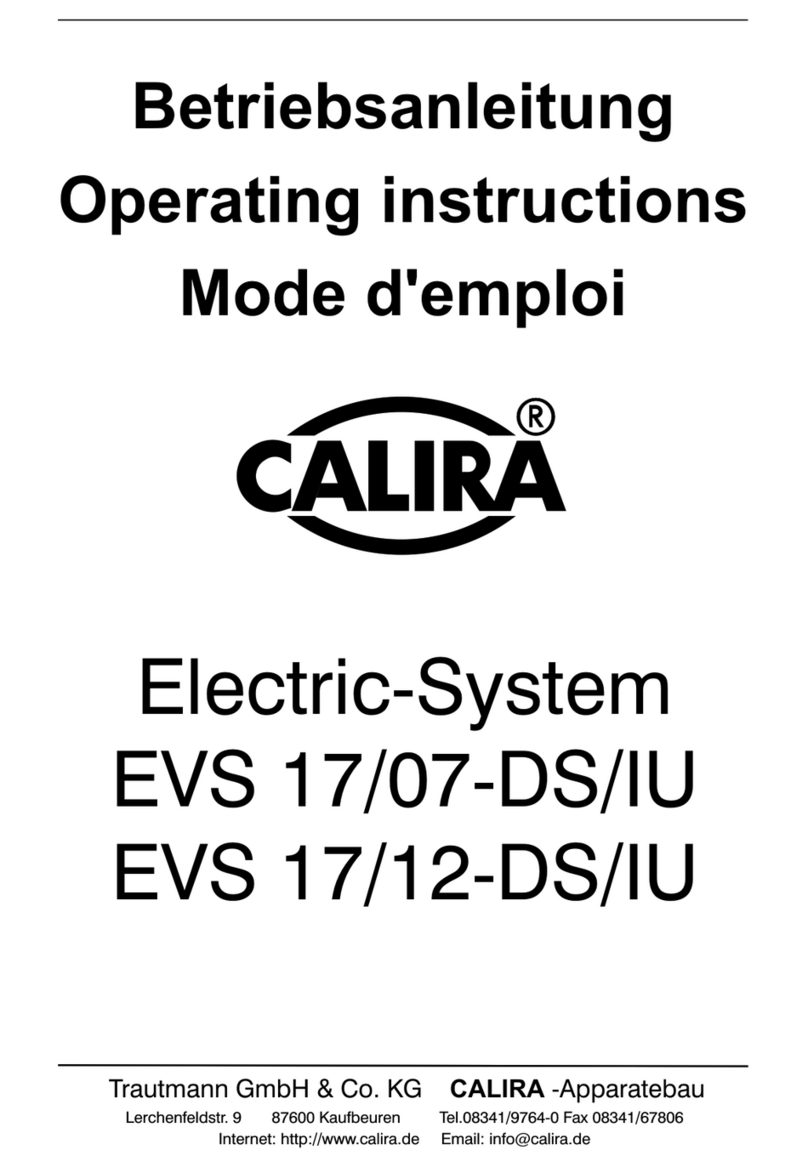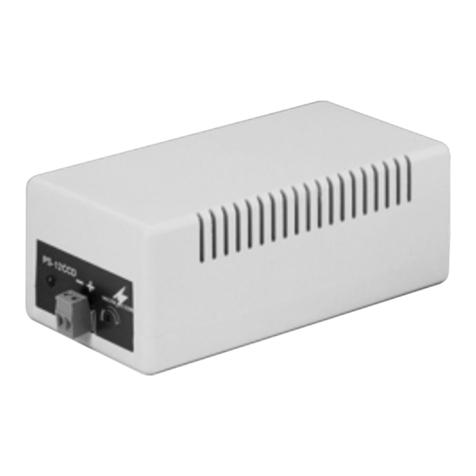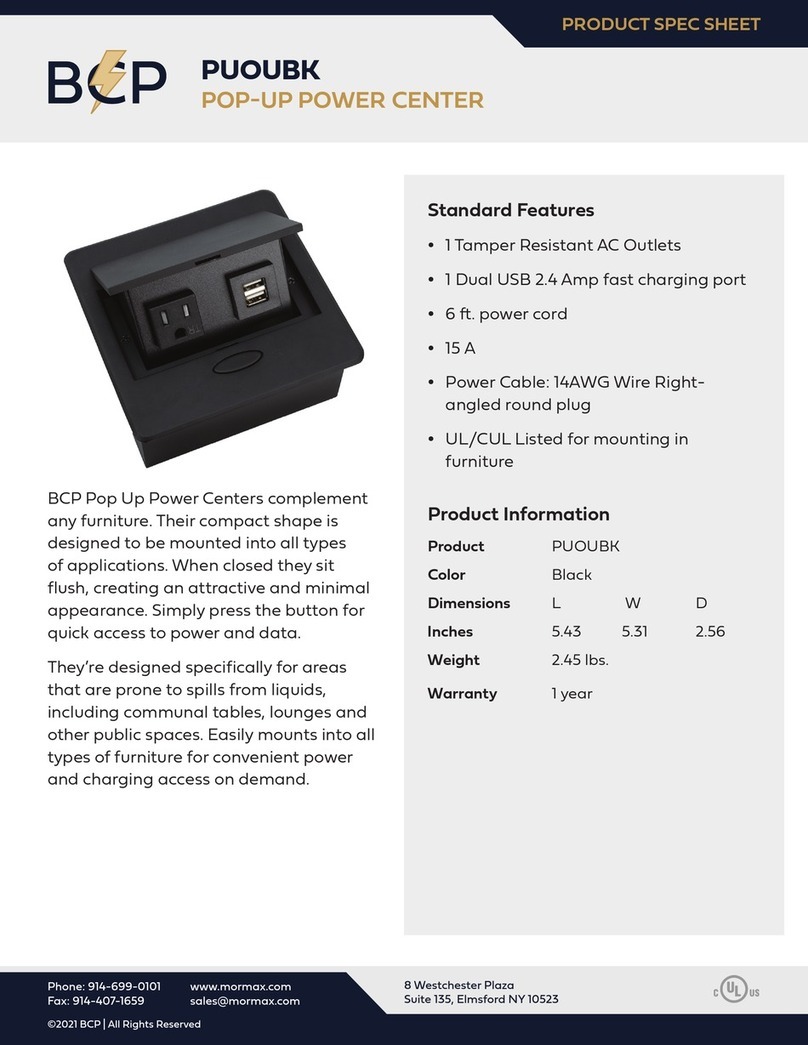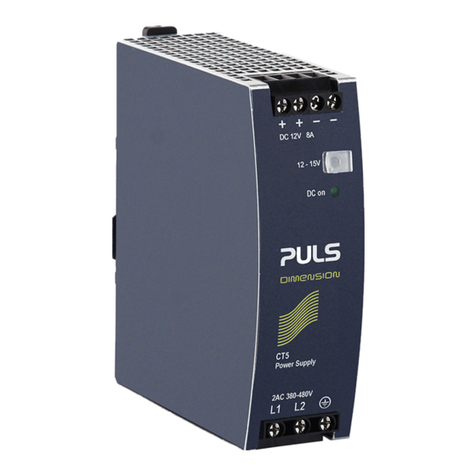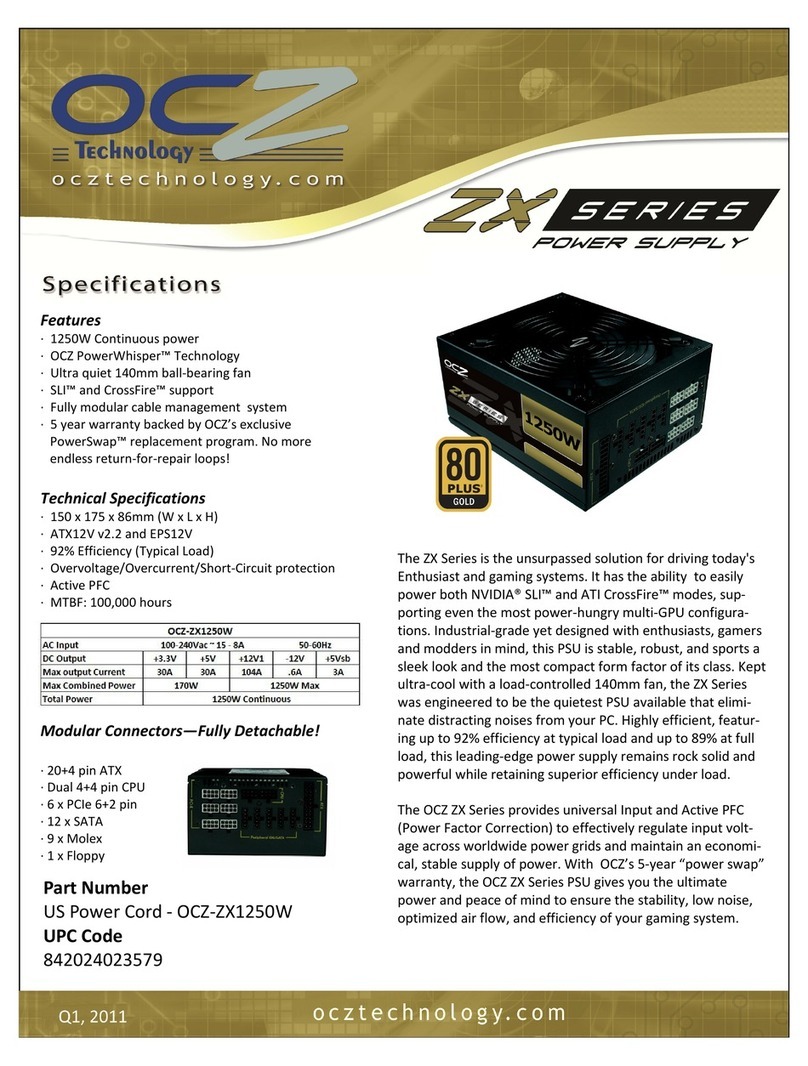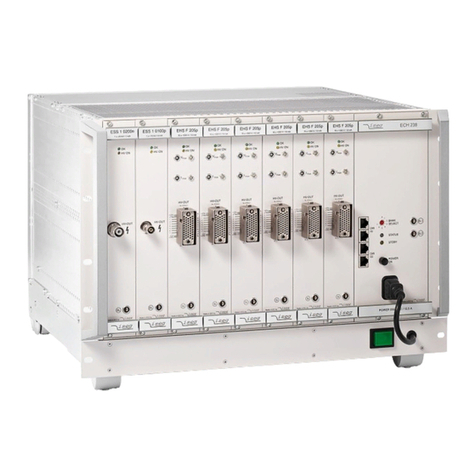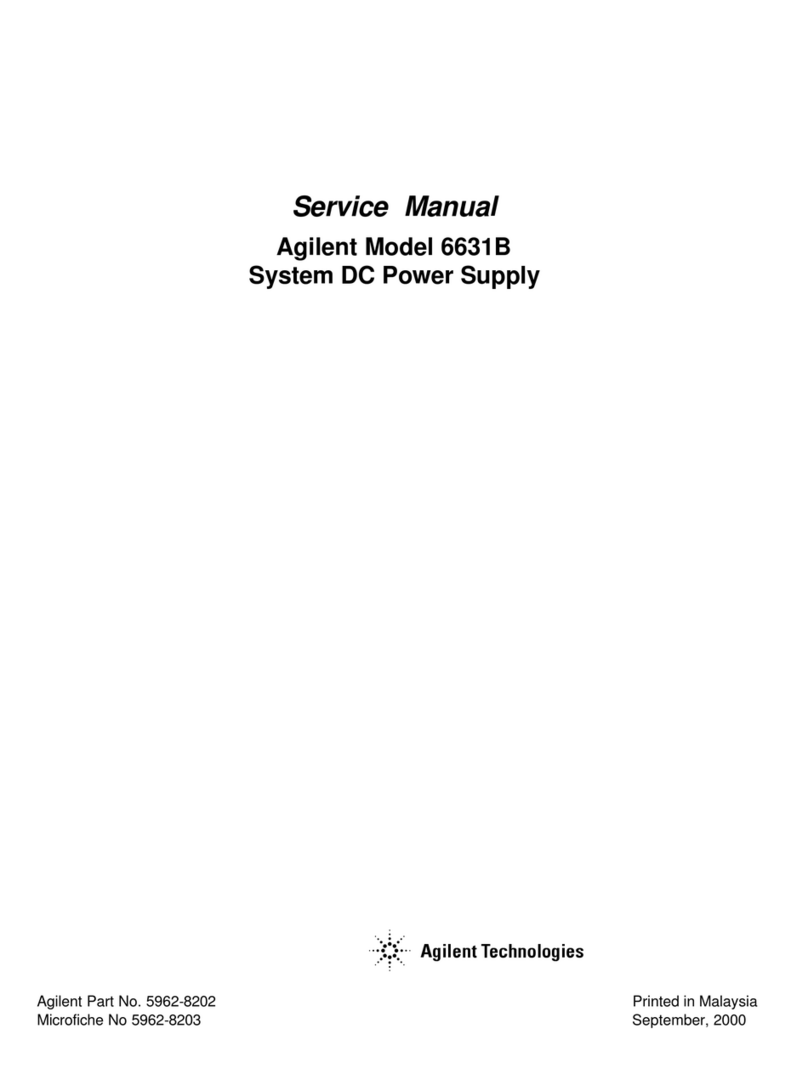7. Select the Configuration Menu link, then change the IP address, Subnet Mask, and
default Gateway to the one provided by your IT Department. Press the Submit
Changes button. The EMS 400TM will save the new IP address, Subnet Mask and
default Gateway and reboot.
8. Change the IP address of the computer back to its original IP address. If the
computer was configured as DHCP (the network domain controller assigns an IP
address) return it to this state. This may require assistance from your IT Department,
or you may need to consult the computer’s manual.
9. The computer and the EMS 400TM are now both configured to communicate on the
network. Both should be accessible via the network. Connect the PC and the EMS
400TM to the network. From the PC web browser, type in the new IP address of the
EMS 400TM. Enter the user name and password as stated above to verify network
access to the device.
EIA-232 Connection
The EMS 400TM can be connected directly to a PC through its EIA-232 port. Designed
for temporary use, this connection supports IP configuration, firmware downloads, and
troubleshooting. Connect via a straight through, 9-pin serial cable.
Wire the Digital Inputs and Relay Outputs
Four (4) wired digital inputs and two (2) wired relay outputs provide expanded
monitoring and notification capabilities. Your wired inputs may look like this:
2 3 4
Mount the Device
The EMS 400TM is designed to installed in a 19-inch rack or mounted on a wall.
If you’re installing it in the front of a rack, use our rack mount bracket.
If you’re installing it in the back of a rack, use our rack mount tabs.
If you’re mounting it on a wall, use Upsite’s wall mount bracket.
Remove the mounting screws from the side of the device, put the mounting bracket or
tabs in place, and reapply the screws. Use the proper anchoring method and hardware
to mount the unit securely in your desired location.
Provide a Power Supply and Ground Connections
1. Power the EMS 400TM from a UPS supply so the device can send alarm notifications
during a power outage. Power can be supplied to the EMS 400TM through either the
power jack and the provided wall adapter OR the power supply terminal block.
2. Connect an 18AWG ground wire from the ground terminal (marked on the upper left
side of the enclosure) to a suitable earth ground.
3. Plug the provided wall adapter into the jack at P1 and the UPS outlet. The wall
adapter has a five foot (1.524m) power cord.
4. If you’re providing your own power supply, connect 24VDC to the unit through
the power terminal block.
Never connect both power sources simultaneously—you will damage the EMS 400TM.
Connect the EMS 400TM to the Network
The EMS 400TM needs network connectivity in order to access the web interface,
configuration screen, and to activate the email (SMTP), BACnet slave, Modbus slave,
and SNMP features. Use the provided CAT 6 crossover cable to the 10/100BASE-T
Ethernet port directly to a PC. Use a straight-through CAT 5 cable (purchased
separately) to connect the EMS 400TM to a network hub or switch.
Set the IP Address Using a Web Browser
If you have not set an IP address before, consult your IT Department for support.
Note: The default IP address for the EMS 400TM is 10.0.0.188
The default Subnet Mask is 255.255.255.0
The default user name is fds (all lowercase)
There is no default password—leave the password field empty.
1. Contact your IT Department to obtain an available IP address, Subnet Mask, and
default Gateway.
2. Plug a crossover network cable (provided) into the laptop or workstation that will be
used to configure the EMS 400TM.
3. You’ll need to change the IP address and Subnet Mask of your computer so it
can communicate with the EMS 400TM in its factory-configured state. Before you
change anything, write down the original IP address and Subnet Mask of your
computer—you’ll need to revert back to these original settings once the
EMS 400TM is configured.
4. Change the IP address and Subnet Mask of the computer from its existing address
to one that will allow it to communicate with the EMS 400TM, such as 10.0.0.189. It
may be beneficial to set the IP address to one that is one number different from the
EMS 400’s IP address (10.0.0.188).
5. Connect the other end of the crossover cable to the Ethernet port on the back
of the EMS 400TM.
6. Access the EMS 400TM through a Web browser — type the EMS 400’s IP address
(10.0.0.188) into the location bar. When prompted, enter the EMS 400TM user name,
which is fds. There is no default password, leave it blank.
Wired outputs may look like this:
Configure the digital inputs and relay outputs in the System Configuration section
of the EMS 400TM web interface. Refer to the EMS 400TM User Guide for more
detailed information.
Sensor Discovery Wizard
The EMS 400TM is equipped with a sensor discovery wizard. Run the wizard when you
install or need to locate new sensors. The wizard will discover available WireFree
sensors and enter them into the Sensors page in the web interface. Once the wizard
has run, it will automatically turn itself off.
To configure sensors to communicate with the EMS 400TM, follow these steps:
1. Install all your sensors in the desired locations. If necessary, pull the nylon tabs or
install batteries to activate the sensors.
2. In the EMS 400’s user interface, click the Admin link in the left navigation bar and
then click the Sensors link to go to the Sensors tab. Click the Sensor Discovery
Wizard button.


